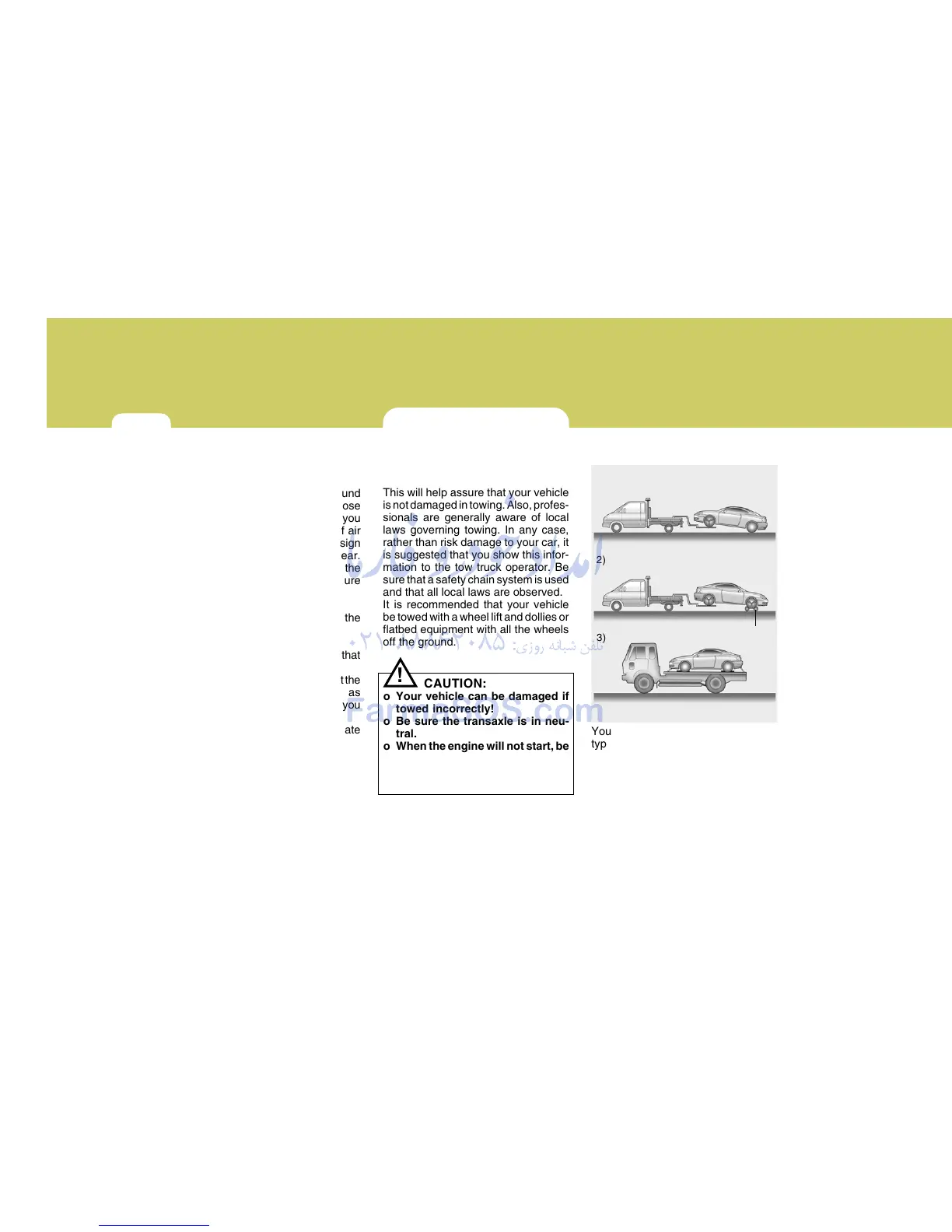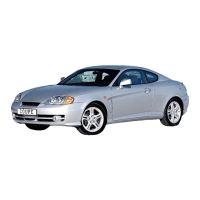3
WHAT TO DO IN AN EMERGENCY
12
IF YOUR VEHICLE MUST BE
TOWED
D080A01O-GAT
If your vehicle has to be towed, it
should be done by your Hyundai dealer
or a commercial tow truck service.
This will help assure that your vehicle
is not damaged in towing. Also, profes-
sionals are generally aware of local
laws governing towing. In any case,
rather than risk damage to your car, it
is suggested that you show this infor-
mation to the tow truck operator. Be
sure that a safety chain system is used
and that all local laws are observed.
It is recommended that your vehicle
be towed with a wheel lift and dollies or
flatbed equipment with all the wheels
off the ground.
!
CAUTION:
o Your vehicle can be damaged if
towed incorrectly!
o Be sure the transaxle is in neu-
tral.
o When the engine will not start, be
sure the steering is unlocked by
placing the key in the "ACC" po-
sition.
D080B01O-GAT
Towing the Vehicle
HGK4030
Your vehicle can be towed by wheel lift
type truck (1), (2) or flatbed equipment
(3).
1)
2)
3)
dolly
Tire Pressure Gauge
(If Installed)
You can easily check the tire pressure
with a tire pressure gauge that is found
in OVM tool bag. Tires normally lose
some air in day-to-day use, and you
may have to add a few pounds of air
periodically and it is not usually a sign
of a leaking tire, but of normal wear.
Always check tire pressure when the
tires are cold because tire pressure
increases with temperature.
To check the tire pressure, take the
following steps;
1. Unscrew the inflation valve cap that
is located on the rim of the tire.
2. Press and hold the gauge against the
tire valve. Some air will escape as
you begin and more will escape if you
don't press the gauge in firmly.
3. A firm non-leaking push will activate
the gauge.
4. Read the tire pressure on the gauge
to know whether the tire pressure is
low or high.
5. Adjust the tire pressures to the speci-
fied pressure. See page 8-3.
6. Reinstall the inflation valve cap.

